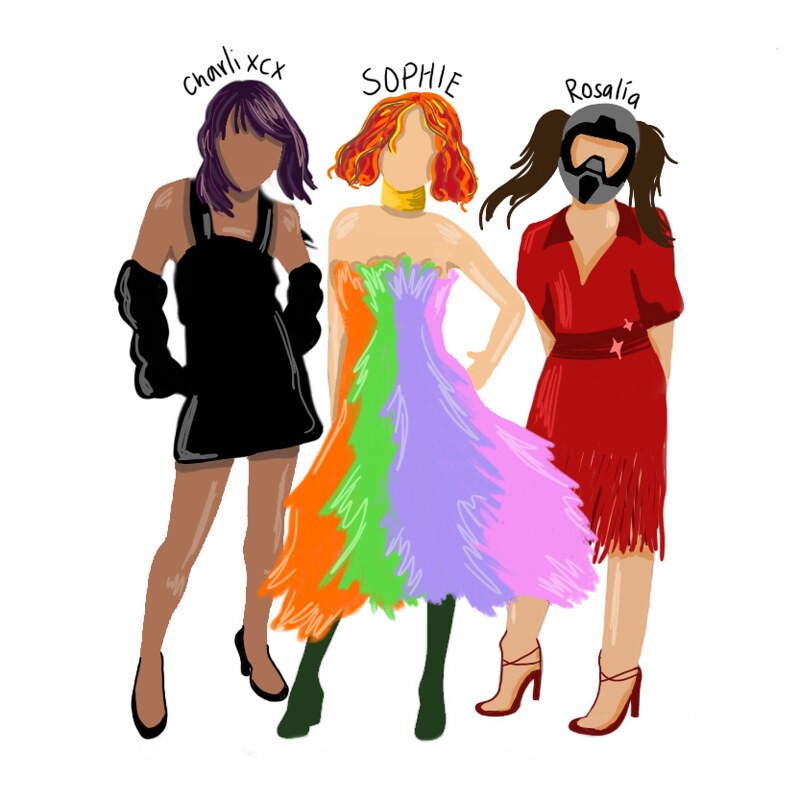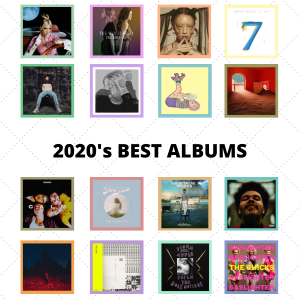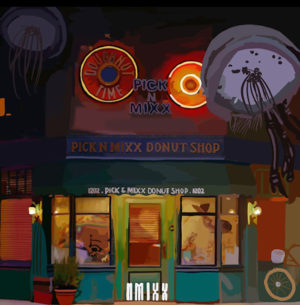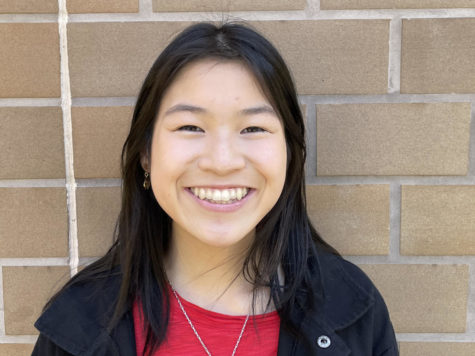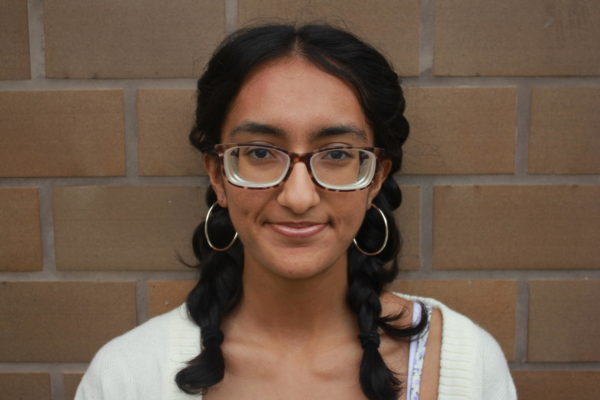Female artists lead music into the future through experimental pop
Charli XCX’s “Pop 2,” SOPHIE’s “Oil of Every Pearl’s Un-Insides” and Rosalía’s “Motomami” are three defining albums of the experimental pop movement.
May 23, 2022
Experimental pop, inherently, cannot be defined. Also called avant-pop and including genres as diverse as glitchcore and art pop, the term is usually meant to describe music that deviates from common song structures and blends multiple genres. Experimental pop songs often heavily utilize electronic production techniques to create a chaotic or futuristic sound. One of the best examples of this is “Tears” by Charli XCX, which layers and builds upon a multitude of effects to create a deliberately overwhelming experience.
Women are leading this movement toward experimentalism and guiding the future sound of pop in a brand new direction. In a 2019 article for “Achona,” Sydney Wills stated that “many of these new experimental pop artists are females daring enough to challenge the traditional principles of the bubblegum pop box that women are often forced into.” Because women have historically faced under representation and a lack of creative freedom within the music industry, Wills argues that a shift toward an avant-garde sound allows women to defy expectations within their field.
The trend of women creating groundbreaking pop is nothing new. Icelandic artist Bjork and Scottish producer SOPHIE are two women who have been breaking the barriers of music for years.
Bjork’s 45-year-long career is most significantly defined by her 1997 album “Homogenic,” a pioneering foray into the world of experimental pop. The critically-acclaimed release fuses classical string instruments with jagged electronic beats and haunting vocals. It paints a raw, enchanting picture of her native country of Iceland, and according to Los Angeles Times critic Richard Cromelin, the stylistic change from her previous work “affirm[ed] her stature as one of pop music’s most uncompromising adventurers.”
SOPHIE, whose identity was shrouded in mystery before coming out as a transgender woman in 2018, pioneered many of the electronic techniques that are now frequently used in experimental styles. She joined an avant-garde electronica collective called PC Music in the early 2010s. In her album “Oil of Every Pearl’s Un-Insides,” she approached music through ideas first before focusing on the style—a technique that often resulted in completely unique sounds.
“[Music] should be built outwardly from conceptual core to aesthetic appearance in order for the conceptual roots to be present and visible in the final product. If you’re working the other way round and trying to force the ideas or content into a pre-existing stylistic mold, then the concepts become warped and deformed,” SOPHIE said in an interview with Pitchfork.
As one of SOPHIE’s protégées, Charli XCX is credited with popularizing the hyperpop genre, a very maxed-out and often highly processed version of pop music. Her 2017 release “Pop 2,” aptly named for its futuristic twist of mainstream sounds, was lauded by Meaghan Garvey of Pitchfork as “the sound of an eclectic, hyperreal future” and “an uninhibited, anti-algorithm vision of what pop music could be.” The album feels frantic and just the right kind of noisy, resulting from the way each song glitches and warps. “Pop 2” is made so remarkable by the way Charli XCX breaks down traditional pop music and reconstructs it in a way that fits her every whim and fancy.
English musician FKA twigs puts a dreamy spin on hyerpop, best seen in her album “Magdalene.” Released in 2019, it showcases intricate and detailed art-pop, crafted around ideas of femininity and empowerment.
“I used to laugh to myself about how, as a woman, your story is often attached to the narrative of a man. No matter what you’re doing or how great your work is, sometimes it’s as though you have to be attached to a man to be validated,” twigs remarked to i-D. As such a personal album, both stylistically and emotionally, she combats every aspect of this idea.
Such themes are common within female experimental pop music. Through assertive, intimate lyrics, women are staking their own claim within the music industry, free of the restrictive labels that have often been imposed on them.
These themes in experimental pop are not confined to English-language releases. Spanish artist Rosalía’s third album “Motomami” swept the lister on an anarchic journey as her characteristic fluttery vocals were juxtaposed over blunt lyrics discussing feminine sexuality and self-expression.
“I’m just as much of a cantaora / When I’m wearing a Versace tracksuit / Or dressed like a bailaora,” she asserts in Spanish on “Bulerias,” a track guided by the titular flamenco rhythm, affirming her duality as both a traditional cultural singer and a pop sensation.
Similarly, girl group Aespa is bringing hyperpop and cyberpunk to audiences in Korea. At multiple points during their hit single “Next Level,” it feels as if the rug has been pulled out from under your feet. Hip-hop gives way to gliding vocals in the bridge, which is also placed surprisingly early in the song. Then the tempo completely changes and a rap is added in, somehow managing to sound crisp rather than messy. Aespa is a prime example of the way unique and innovative song structures contribute to the experimental pop movement.
It can be difficult to enjoy experimental pop, and its sounds sometimes induce sensory overload. Though the dissonant melodies may appear randomly chosen, it’s crucial to remember that this genre is just another style of art. Not everyone will enjoy or understand experimental pop, but it can be appreciated nonetheless as a crucial movement within music.
Ultimately, this shift away from tradition and toward avant-garde pop expands the possibilities of personal expression through music and allows listeners to push the own boundaries of their listening.

